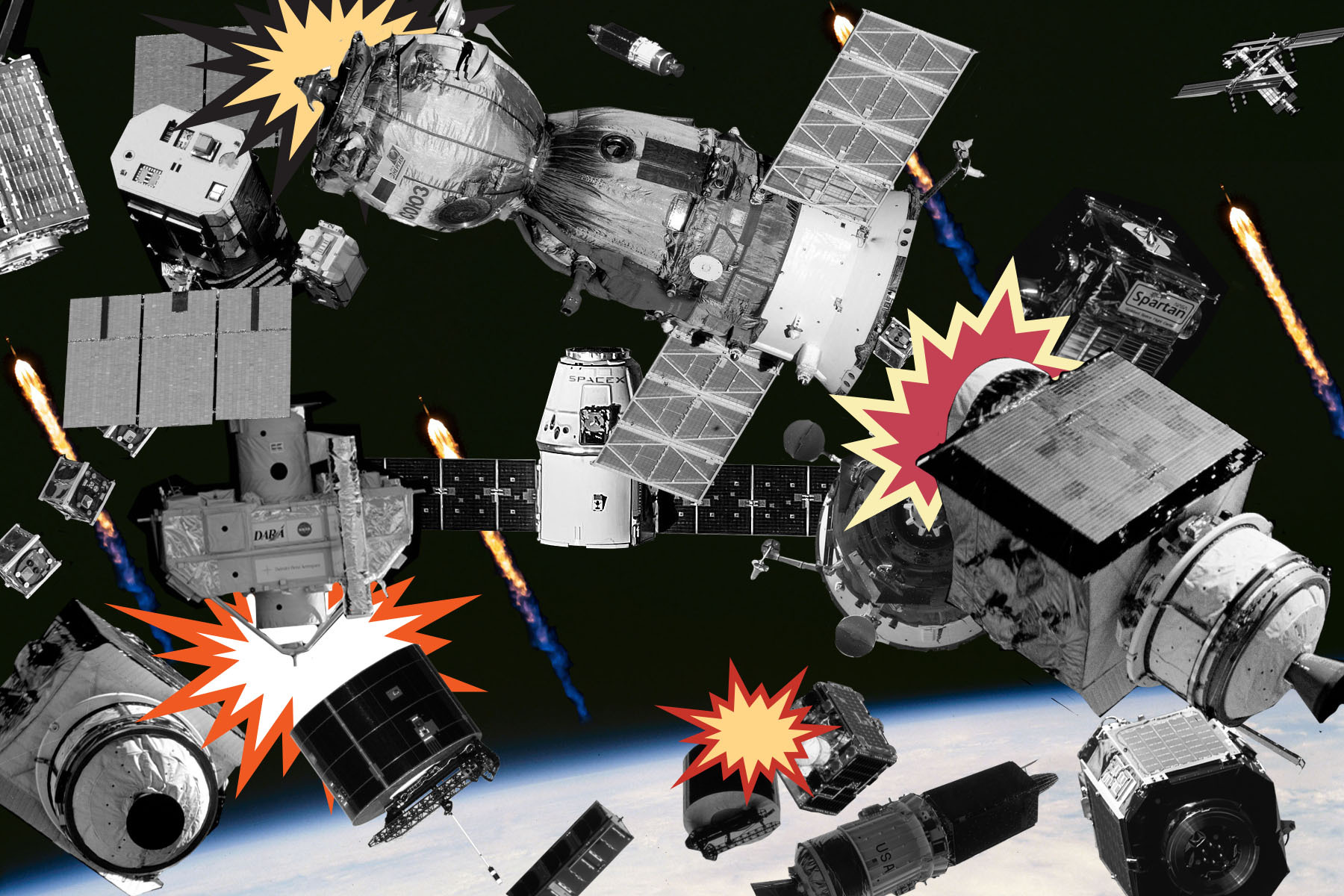In the summer of 1968, officials at the National Aeronautics and Space Administration (NASA) were worried about the accelerating space race with the Soviet Union and whether the United States could keep up. By the end of July that year, the Soviets had launched forty-five rockets into space; America managed half that. The Central Intelligence Agency warned that the Soviets were restarting their Soyuz spacecraft program and were close to making an attempt to orbit the moon. Meanwhile, technical problems plagued the US’s Apollo program. Prospects for meeting John F. Kennedy’s goal of landing a man on the moon before the end of the 1960s looked grim.
NASA met the challenge of a fast-moving space race by speeding it up even further than many thought possible. The accelerationist strategy won out. By December, Apollo 8 circled the moon. Seven months later, Neil Armstrong and Buzz Aldrin left footprints on the Sea of Tranquility. The Soviets never made it.
Looking back, the idea that the space race was moving too quickly in the 1960s seems quaint. What was once a contest primarily between two superpowers angling for military advantage has become a crowded ecosystem of countries and commercial actors. Facilitated by a steep fall in the cost of blasting things into space, launches and missions have occurred so frequently over the past decade that only full-time observers can keep track. In 2023, according to data collected by Harvard University astrophysicist Jonathan McDowell, 223 launch attempts were made from more than a dozen countries, with more than half initiated by private companies. Nearly 2,900 satellites were successfully deployed—twenty times more than in 1968. Close to 30,000 large objects are currently in orbit. Roughly a quarter of active satellites belong to a single company: Elon Musk’s SpaceX.
As the new space age picks up speed and more countries and companies get involved, it is increasingly difficult to manage risks to the environment, the economy, and the lives of astronauts and people on Earth. The exponential rise in untracked and uncontrollable objects in space increases the likelihood of collisions that could knock out global communication and navigation systems. Opportunities to use space for social and economic benefit are being hoarded by rich countries and businesses. China, India, Russia, and the United States are locked in a race to deploy and test weapons in space.
On its current trajectory, the new space age could be its own worst enemy. Existing treaties and agreements are simply not up to the task of governing space in ways that minimize the existential risks to humanity.
The rules governing space come mainly from the 1967 Outer Space Treaty (OST)—officially the Treaty of Principles Governing the Activities of States in the Exploration and Use of Outer Space, Including the Moon and Other Celestial Bodies. Adopted by the United Nations during the Cold War and signed by over 100 countries, including the major spacefaring powers China, France, India, Japan, Russia, and the US, the OST emphasizes that space activities should be carried out “in the interests of all countries” and “exclusively for peaceful purposes.” It prohibits sovereignty claims in space, forbids states from placing weapons in orbit or on celestial bodies, and urges states to “avoid harmful contamination of space and celestial bodies.”
For many years after its adoption—and, in some ways, right into the current space age—the treaty served humanity well. By 1975, Soviets and Americans joined forces on the first international space mission. Behind-the-scenes negotiations, along with a thaw in the Cold War, resulted in the Apollo–Soyuz Test Project, a test of rendezvous and docking capabilities for potential rescue missions. States have tried to abide by the treaty. Even when space activities bend or break its principles—such as the US’s 2015 Commercial Space Launch Competitiveness Act, which gave US citizens rights to resources on asteroids and other celestial bodies—many states make efforts to argue that their actions are consistent with the OST. In such cases, the treaty continues to have normative, if not always practical, force.
Over the past decade, however, space has become much more contested and harder to govern. Nearly 1,000 private companies now offer space-based products and services. Expanding satellite constellations offer better internet access in remote and developing communities, enabling more people to access online health care, work remotely, and connect with family and friends. Space technologies also support better weather and climate monitoring, improve navigation and transportation logistics, and enhance agricultural productivity through the use of land- and water-quality sensors. All this has contributed to a space economy with an estimated value of $447 billion (US), on a trajectory to reach $1 trillion by 2030. And missions focused on exploration and scientific discovery are expanding—including the US-led Artemis program that aims to land human beings on the moon for the first time in over fifty years.
But this new space age poses substantial risks. Orbital debris from inactive satellites, discarded rocket parts, and anti-satellite weapons tests threatens the infrastructure on which our social and economic well-being now depends, as well as the lives of astronauts working on space stations. In addition to the 30,000 objects large enough to track, there are an estimated 1 million debris fragments—between one and ten centimetres in diameter—that are too small to be picked up by ground-based radar and surveillance networks. Experts put the likelihood of future collisions between these objects at near certainty, with potential for cascading and catastrophic damage including entire satellite communication systems being taken out and larger debris fragments falling to Earth and threatening lives and ecosystems.
The environmental impact of the new space age isn’t promising either. While rockets tend to use less-polluting fuel than is common in the aviation industry, the volume required, the increase in launches, and the fact that rocket emissions are deposited higher in the atmosphere worry many environmental scientists. A mix of chemicals produced by many kinds of rocket launches—including black carbon, hydrogen chloride, and alumina—can increase stratospheric temperatures and contribute to ozone depletion. Moreover, when space objects “burn up” on re-entry, the particles do not simply disappear but instead hang in the atmosphere, posing additional risks to Earth’s ozone layer.
It also looks like the current space age may exacerbate global inequality. The OST and the 1979 Moon Agreement speak of an “equitable” sharing of the benefits of space and call for “special consideration” to the needs and interests of developing countries. Yet estimates of space mining revenues reaching into the trillions of dollars have spurred private companies to initiate resource-grabbing missions, with powerful governments creating room for them to operate.
The prohibition on the ownership and appropriation of locations in space also seems to be breaking. The US Commercial Space Launch Competitiveness Act has been criticized by China, Russia, and others for potentially violating the OST’s prohibition on “national appropriation,” but these same countries have their own mining ambitions and are already returning samples from the moon and asteroids. Bottom line: by the time less-developed countries get their act together on the launch pad, space may be too crowded for them to participate.
One of the biggest worries is weapons. Aspirations to keep space peaceful seem to be slipping away. China, India, Russia, and the US have all used anti-satellite weapons to shoot down their own satellites to brag about their military capabilities, and Russia is reportedly working on nuclear anti-satellite capabilities in space. While publicly challenging the Russians on this development, the United States Space Force is simultaneously preparing for what it calls “responsible counterspace campaigning”—a term many observers agree is a euphemism for deploying military capabilities in space.
Moreover, as space security expert Jessica West has noted, the challenge of keeping space weapons-free is complicated by the proliferation of dual-use technologies that ostensibly serve peaceful purposes but can easily be repurposed or redeployed as a threat. For example, China’s robotic space arm and the US’s mission extension vehicle, while intended for servicing the satellites of the respective nations, could be used to sabotage other countries’ space-based technologies.
Major space powers and private sector actors are testing the limits of the OST and other international agreements. Their activities reveal the treaty’s ambiguity on some issues, silence on others, and the same enforcement challenges that all international agreements face—namely, the lack of an independent authority to assess violations and impose binding penalties and sanctions.
International cooperation is making some progress on managing symptoms—but very little on more fundamental questions about who should be permitted to put what in space and at what cost to the current and future well-being of people and communities on Earth. Coordination on tracking and managing objects in Earth’s orbit, as well as sharing information to avoid collisions, is one area where optimism about our collective space future might be warranted. Representatives from all major space agencies regularly meet to discuss mitigation strategies at the Inter-Agency Space Debris Coordination Committee and other fora. While countries closely guard their debris monitoring systems, norms around mutual notification of potentially dangerous debris have emerged.
At the same time, the number of objects being deployed into orbit is accelerating. With ambitions to generate revenue by providing comprehensive and relatively low-cost communications services around the globe, SpaceX plans to add another 30,000 satellites to the already 6,000 that make up its mega constellation. Racing to claim space in low Earth orbit before it becomes too congested, other countries and companies are deploying similar swarms of satellites. This is all happening at a pace that threatens to overwhelm debris monitoring and mitigation efforts and that outstrips the capacity of less-advanced countries to claim their fair share of orbital space. Existing governance mechanisms were not designed for this level and kind of activity.
In 1969, astronauts Frank Borman, Bill Anders, and Jim Lovell were aboard Apollo 8, making the third of their ten orbits around the moon. As the spacecraft returned from the moon’s far side, Anders looked out the front window and saw Earth. He took an unscheduled and now iconic photo: Earthrise.
In an interview years later, Anders reflected on the experience. “When I looked up and saw the Earth coming up on this very stark, beat-up Moon horizon . . . I was immediately almost overcome with the thought, ‘Here we came all this way to the Moon, and yet the most significant thing we’re seeing is our own home planet, the Earth.’”
Hope for a well-governed new space age might be reasonable, but it will depend on all spacefaring actors recognizing, as Anders did, the “most significant thing” and the needs and vulnerabilities of all people who live on it.
Reprinted, with permission, from the Centre for International Governance Innovation.






